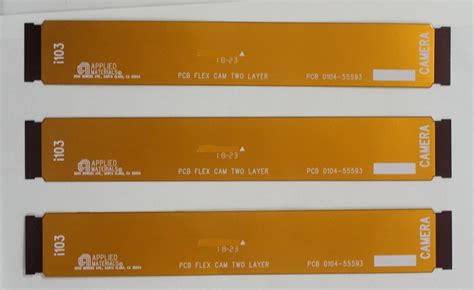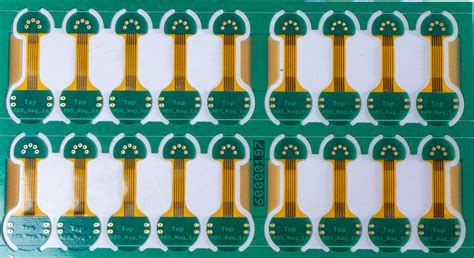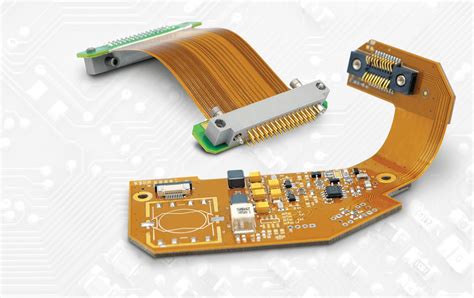Flex PCB Manufacturing: Key Trends and Applications
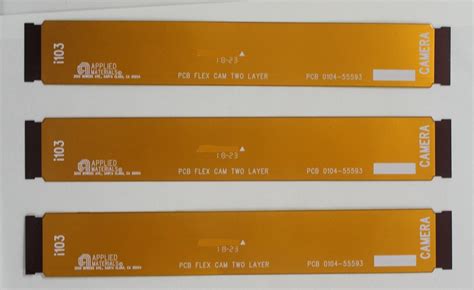
Key Takeaways
When navigating PCB manufacturing for flexible circuits, understanding cost drivers and technological advancements becomes crucial. Modern flex PCB designs demand precision in material selection and layer stacking, directly impacting PCB manufacturing cost. Leading PCB manufacturing companies now leverage automated optical inspection (AOI) and laser direct imaging (LDI) to reduce errors by up to 40%, ensuring faster turnaround for prototypes.
| Factor | Traditional Approach | Modern Innovation |
|---|---|---|
| Cost Efficiency | High material waste | Laser-cut substrates |
| Lead Time | 10-15 days | 3-5 days with rapid prototyping |
| Flexibility | Limited layer options | Dynamic rigid-flex integration |
Tip: Always verify if your PCB manufacturing business partner adheres to IPC-6013 standards for flexible circuits—this ensures reliability in high-stress environments like wearables.
Emerging applications in wearables and IoT require thinner, lighter circuits, pushing PCB manufacturing toward polyimide films and roll-to-roll processing. For startups, balancing PCB manufacturing cost with quality often means partnering with suppliers offering scalable solutions, such as modular tooling systems.
Advancements in 3D printing and sustainable materials are reshaping the industry, enabling PCB manufacturing companies to deliver eco-friendly options without compromising durability or miniaturization. Whether you’re prototyping or scaling, aligning with innovators in PCB manufacturing business ensures your designs stay ahead of curve.

Flex PCB Market Growth Analysis
The PCB manufacturing sector is experiencing significant expansion, driven by surging demand for flexible circuits across industries. As wearables and IoT devices become mainstream, PCB manufacturing companies are scaling production to meet the need for compact, high-performance solutions. Market analysts project a compound annual growth rate (CAGR) of over 11% through 2030, fueled by advancements in material science and miniaturization trends.
A critical factor shaping this growth is the reduction in PCB manufacturing cost, achieved through innovations like roll-to-roll processing and automated assembly lines. These efficiencies enable suppliers to deliver flexible circuits at competitive prices, making them accessible for both high-volume and niche applications. Simultaneously, the PCB manufacturing business is evolving to prioritize sustainability, with recyclable substrates and energy-efficient processes gaining traction.
Emerging markets, particularly in Asia-Pacific, are accelerating adoption as local governments incentivize electronics innovation. However, challenges persist, including supply chain complexities and the need for specialized expertise in high-density interconnect (HDI) designs. To stay competitive, manufacturers must balance cost optimization with investments in R&D—ensuring they can support next-generation applications like foldable displays and medical wearables.
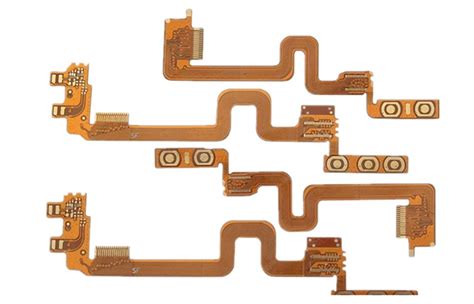
Innovative Flex Circuit Design Strategies
When designing flexible circuits, you need to balance performance with manufacturability. Modern PCB manufacturing demands strategies that address challenges like dynamic bending, thermal management, and space constraints. One approach involves adopting asymmetric stack-ups to optimize signal integrity while reducing PCB manufacturing cost by minimizing material waste. Advanced simulation tools now enable rapid iteration, allowing you to test designs under real-world conditions before committing to production—a critical advantage when partnering with PCB manufacturing companies specializing in high-mix, low-volume runs.
Another trend is hybrid rigid-flex designs, which integrate rigid sections for component mounting and flexible segments for 3D assembly. These require close collaboration with PCB manufacturing business experts to ensure compatibility with automated assembly processes. For wearables and IoT devices, embedding ultra-thin conductive layers or stretchable substrates can enhance durability without compromising flexibility. However, this often involves trade-offs in PCB manufacturing complexity, underscoring the importance of early supplier engagement.
By prioritizing modular design principles and leveraging materials like polyimide with higher temperature resistance, you can future-proof circuits for evolving applications. This proactive approach not only accelerates time-to-market but aligns with cost-efficient scaling—key considerations in today’s competitive landscape.
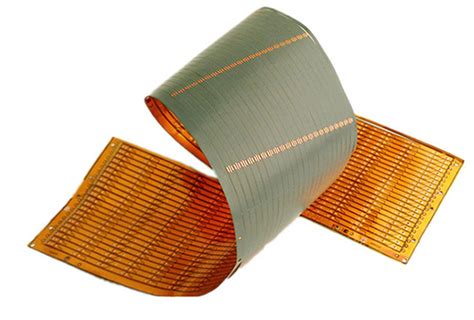
Wearable Tech Flex PCB Applications
As wearable technology evolves, pcb manufacturing must address unique challenges like miniaturization, durability, and dynamic flex cycles. Devices like smartwatches, fitness trackers, and medical wearables rely on flex circuits to conform to curved surfaces while maintaining electrical stability. For example, sensors embedded in health-monitoring bands demand ultra-thin designs, pushing pcb manufacturing companies to adopt advanced materials such as polyimide films or stretchable substrates.
Balancing pcb manufacturing cost with performance is critical here. You’ll often see layered rigid-flex designs in premium wearables, where high-density interconnects enable complex functionalities without bulk. However, optimizing production for smaller batches—common in niche wearable markets—requires pcb manufacturing business models that prioritize agility. Leading suppliers now offer rapid iteration cycles, allowing designers to test prototypes under real-world conditions like moisture exposure or repeated bending.
By leveraging innovations in laser drilling and additive printing, modern flex PCBs achieve tighter tolerances, ensuring reliability even in high-motion applications. This focus on precision directly supports emerging trends like epidermal electronics or AR glasses, where seamless integration with the human body is non-negotiable.
IoT Devices Flex PCB Integration
As IoT ecosystems expand, integrating flex PCB manufacturing into connected devices has become critical for enabling compact, lightweight designs. Flexible circuits adapt seamlessly to irregular shapes and dynamic environments, making them ideal for sensors, smart home modules, and industrial IoT controllers. Leading PCB manufacturing companies now prioritize ultra-thin substrates and high-density interconnects (HDIs) to meet the demand for miniaturization without compromising signal integrity.
When optimizing PCB manufacturing cost for IoT deployments, material selection plays a pivotal role. Polyimide films, for instance, balance thermal stability and bend endurance, while roll-to-roll processing reduces waste in high-volume production. This shift toward scalable solutions allows businesses to align with evolving energy efficiency standards and wireless communication protocols like 5G and LoRaWAN.
Moreover, the PCB manufacturing business is leveraging advanced simulation tools to predict mechanical stress in flexible layouts, ensuring reliability across temperature fluctuations and repeated flexing cycles. By collaborating with rigid-flex PCB suppliers, developers can prototype hybrid designs that merge rigid components with flexible interconnects—key for wearables and edge-computing devices.
As IoT applications diversify, innovations in flex PCB manufacturing continue to address challenges like EMI shielding and moisture resistance, enabling smarter, more durable connected systems.
Rapid Prototyping in Flex PCB Manufacturing
When developing flexible circuits, speed-to-market often determines competitive advantage. Modern PCB manufacturing workflows now prioritize agile prototyping to meet tight deadlines without compromising quality. Advanced software tools enable PCB manufacturing companies to simulate bend cycles, thermal stress, and signal integrity before physical production begins—reducing iterations by up to 40%.
For projects requiring custom geometries, laser direct imaging (LDI) and 3D-printed polyimide substrates allow same-day design validation. This capability is critical for startups balancing PCB manufacturing cost constraints with the need for functional prototypes. By partnering with suppliers offering rapid-turn services, you can test multiple design variants in days rather than weeks.
Leading PCB manufacturing business models now integrate AI-driven design-for-manufacturing (DFM) checks, automatically flagging issues like inadequate bend radii or copper thickness mismatches. These systems slash rework rates while maintaining compliance with IPC-6013 standards. For rigid-flex hybrids, modular tooling setups enable simultaneous testing of flexible and rigid sections, accelerating validation cycles by 30%.
As IoT and wearable tech demand thinner, lighter circuits, prototyping efficiency becomes a strategic differentiator. By leveraging these advancements, you can compress development timelines while ensuring scalability for mass production.
Reliable Rigid-Flex PCB Suppliers
When selecting partners for PCB manufacturing, the ability to deliver high-performance rigid-flex solutions becomes critical. Leading PCB manufacturing companies distinguish themselves through advanced capabilities in multilayer stacking, precision etching, and material compatibility testing. You’ll want suppliers that adhere to ISO-certified processes, ensuring consistent quality for applications like medical devices or aerospace systems, where reliability is non-negotiable.
Balancing PCB manufacturing cost with technical requirements is key. Reputable providers optimize material usage—such as polyimide films or copper substrates—while minimizing waste through laser-cutting automation. For startups in the PCB manufacturing business, partnering with agile suppliers offering scalable production runs can accelerate time-to-market without compromising design integrity.
Transitioning from rapid prototyping to full-scale production requires seamless collaboration. Top-tier suppliers integrate design-for-manufacturability (DFM) feedback early, addressing potential issues in bend radius or impedance control. This proactive approach reduces iterations, particularly vital for IoT sensors or wearable tech needing ultra-thin, durable circuits.
Finally, assess suppliers’ adaptability to emerging trends like embedded components or hybrid rigid-flex designs. Transparent communication about lead times, testing protocols, and compliance standards ensures your projects stay aligned with evolving industry demands.

Flex PCB Manufacturing Process Advancements
Recent advancements in PCB manufacturing have transformed how flexible circuits are produced, enabling higher precision and scalability. Modern automated optical inspection (AOI) systems now detect micron-level defects in real time, reducing waste and improving yield rates. Leading PCB manufacturing companies are adopting laser direct imaging (LDI) to achieve finer trace widths below 25µm, critical for compact wearables and IoT devices.
A key innovation lies in roll-to-roll (R2R) processing, which slashes PCB manufacturing cost by 30-40% through continuous production of flexible substrates. This method also accelerates prototyping cycles, allowing designers to iterate faster without compromising quality. Additionally, advancements in materials—such as ultra-thin polyimide films and adhesiveless laminates—enhance thermal stability while maintaining bend endurance.
For businesses, integrating additive manufacturing techniques like aerosol jet printing minimizes material usage, making small-batch production economically viable. This evolution directly benefits the PCB manufacturing business by opening doors to niche markets requiring customized solutions. As you explore these innovations, it’s clear that smarter processes are driving both performance gains and cost efficiencies across the industry.
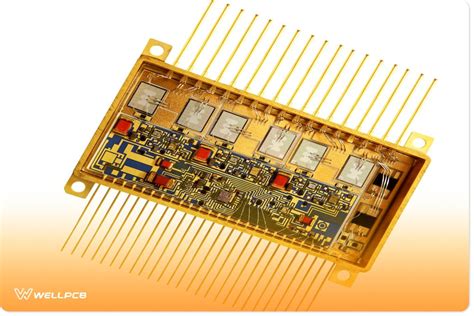
Future Trends in Flexible Electronics
As flexible electronics evolve, you’ll see PCB manufacturing pivot toward ultra-thin, stretchable substrates that enable seamless integration into unconventional form factors. Innovations like graphene-based inks and biodegradable polymers are redefining material science, allowing PCB manufacturing companies to create circuits that conform to dynamic environments—from foldable displays to implantable medical devices. A critical shift lies in hybrid systems combining rigid and flexible components, which reduces PCB manufacturing cost while enhancing durability for high-stress applications like automotive sensors.
Advancements in additive manufacturing and AI-driven design tools are accelerating prototyping cycles, enabling businesses to test iterations faster than ever. This aligns with the growing PCB manufacturing business focus on sustainability, as companies adopt eco-friendly processes like laser ablation for waste reduction. Meanwhile, IoT and wearable tech demand circuits that withstand repeated bending—pushing suppliers to refine conductive adhesives and thin-film technologies.
Looking ahead, expect energy-harvesting flex circuits and self-healing materials to dominate R&D pipelines. As these technologies mature, collaboration between PCB manufacturing companies and end-users will become vital to balance performance demands with scalable production. The future hinges on bridging innovation with affordability—ensuring flexible electronics remain accessible across industries.
Conclusion
As flexible electronics continue to reshape industries, understanding the strategic role of PCB manufacturing becomes critical for staying competitive. The evolution of flex circuits demands collaboration with PCB manufacturing companies that balance innovation with cost-efficiency, particularly as PCB manufacturing cost remains a decisive factor for scaling production. Whether you’re integrating ultra-thin designs into wearables or optimizing rigid-flex hybrids for IoT devices, aligning with suppliers who prioritize advanced processes ensures reliability without compromising agility.
Emerging trends, from AI-driven prototyping to sustainable materials, underscore the need for PCB manufacturing business models to adapt rapidly. By leveraging advancements in high-density interconnects and automated assembly, you can future-proof projects while meeting tighter timelines. Ultimately, success hinges on selecting partners who not only master technical complexities but also align with your vision for next-gen applications—ensuring that every investment in PCB manufacturing translates into tangible, market-ready solutions.
Frequently Asked Questions
How does flex PCB manufacturing differ from traditional rigid PCB production?
Flexible circuits require specialized materials like polyimide films and precise laser etching techniques. Unlike PCB manufacturing for rigid boards, flex processes prioritize bend endurance and lightweight construction, impacting both PCB manufacturing cost and design validation phases.
What factors should you consider when choosing PCB manufacturing companies for flex circuits?
Evaluate suppliers based on UL certification, minimum bend radius capabilities, and experience with high-density interconnects. Leading PCB manufacturing business providers often offer prototyping services—critical for wearables and IoT devices requiring iterative testing.
Why does PCB manufacturing cost vary significantly for flex designs?
Material selection (e.g., adhesive-less copper layers), layer count, and impedance control requirements directly affect pricing. Low-volume PCB manufacturing runs for niche applications like medical sensors also incur higher per-unit costs compared to standardized rigid boards.
Can PCB manufacturing companies handle hybrid rigid-flex designs?
Yes, most reputable suppliers integrate rigid and flex layers using laser-drilled vias and advanced lamination. This hybrid approach is essential for aerospace and automotive systems where durability and space constraints coexist.
How do advancements in PCB manufacturing impact rapid prototyping?
Modern techniques like 3D printed circuitry and automated optical inspection (AOI) reduce lead times from weeks to days. Partnering with agile PCB manufacturing business partners ensures faster validation for emerging IoT and wearable tech applications.
Ready to Optimize Your Flex PCB Project?
For tailored solutions in PCB manufacturing, please click here to connect with experts specializing in high-reliability flex and rigid-flex circuits.

